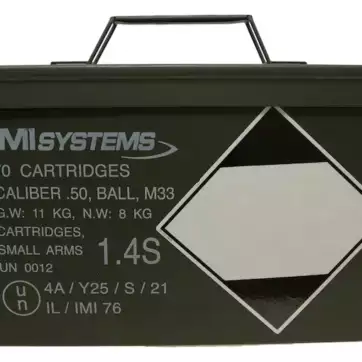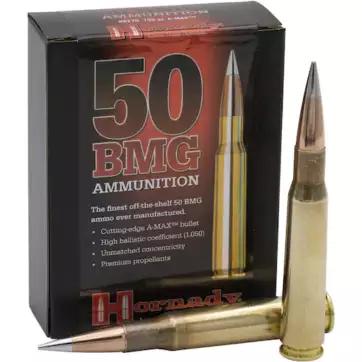50 BMG
50 BMG Ammo For Sale
50 BMG, 12.7×99mm NATO and designated as the 50 Browning by the C.I.P. is a .50 in (12.7 mm) caliber cartridge developed for the M2 Browning heavy machine gun in the late 1910s, entering official service in 1921. Under STANAG 4383, it is a standard service cartridge for NATO forces as well as many non-NATO countries. The cartridge itself has been made in many variants: multiple generations of regular ball, tracer, armor-piercing (AP), incendiary, and saboted sub-caliber rounds. The rounds intended for machine guns are made into a continuous belt using metallic links.
The .50 BMG cartridge is also used in anti-materiel rifles. A wide variety of ammunition is available, and the availability of match grade ammunition has increased the usefulness of .50 caliber rifles by allowing more accurate fire than lower quality rounds
History
In response to the need for new anti-aircraft weaponry during World War 1 developed the .50 BMG. He wanted the round to be used in a machine gun, and wanted the machine gun to be based on a scaled-up version of the M1917 Browning.
The development of the .50 BMG round is sometimes confused with the German 13.2 mm TuF, which was developed by Germany for an anti-tank rifle to combat British tanks during WWI and against aircraft. According to the American Rifleman: “Actually, the Browning .50 originated in the Great War. American interest in an armor-piercing cartridge was influenced by the marginal French 11 mm design, prompting U.S. Army Ordnance officers to consult Browning. They wanted a heavy projectile at 2700 feet per second (f.p.s.), but the ammunition did not exist. Browning pondered the situation and, according to his son John, replied, ‘Well, the cartridge sounds pretty good to start. You make up some cartridges and we’ll do some shooting.
Showing all 2 results


